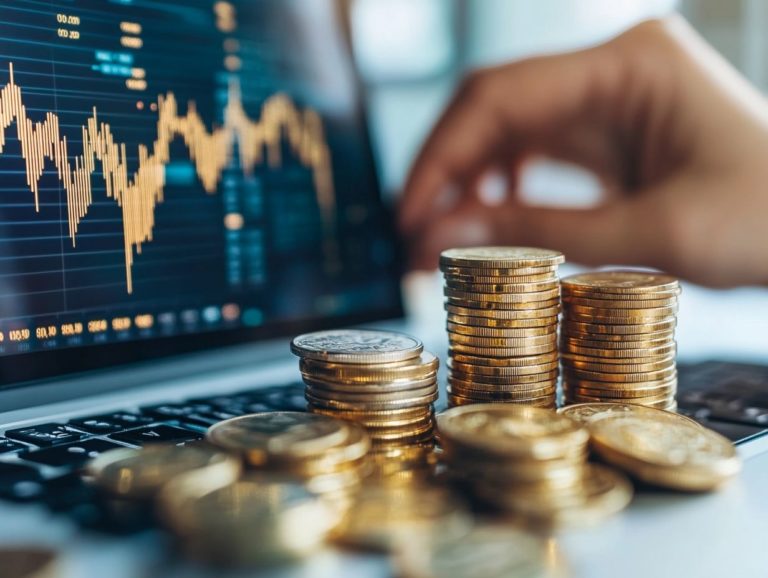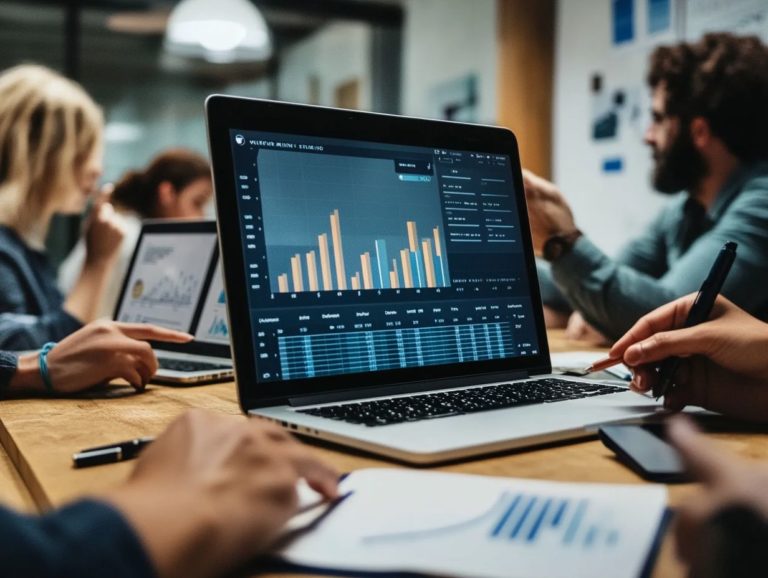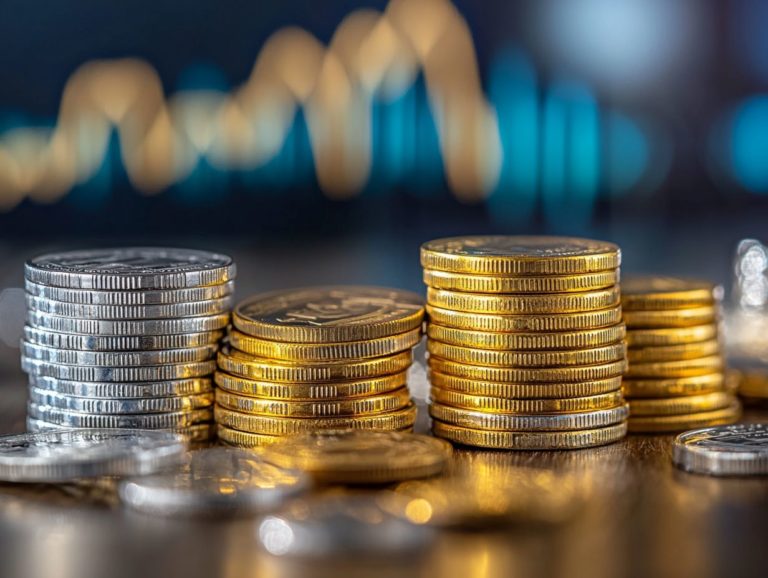How to Read Precious Metals Charts
Navigating the realm of precious metals trading is an exhilarating yet challenging endeavor.
Understanding the details of precious metals charts is essential for making well-informed investment choices. This guide delves into the various types of charts utilized in trading, helping you interpret price movements and understand the factors that sway precious metals prices.
You will uncover key technical analysis techniques and practical strategies to read charts with precision. Whether you’re just starting out or have years of experience, this overview is designed to elevate your trading skills to new heights.
Contents
- Key Takeaways:
- Understanding Precious Metals Charts
- Factors Affecting Precious Metals Prices
- Unlocking Secrets: Analyze Precious Metals Charts
- Using Charts to Make Informed Decisions
- Frequently Asked Questions
- What are precious metals charts and why are they important?
- How do I read a precious metals chart?
- What is the price scale on a precious metals chart?
- What is the time scale on a precious metals chart?
- What are the different types of charts used for precious metals?
- How can technical indicators help with reading precious metals charts?
Key Takeaways:
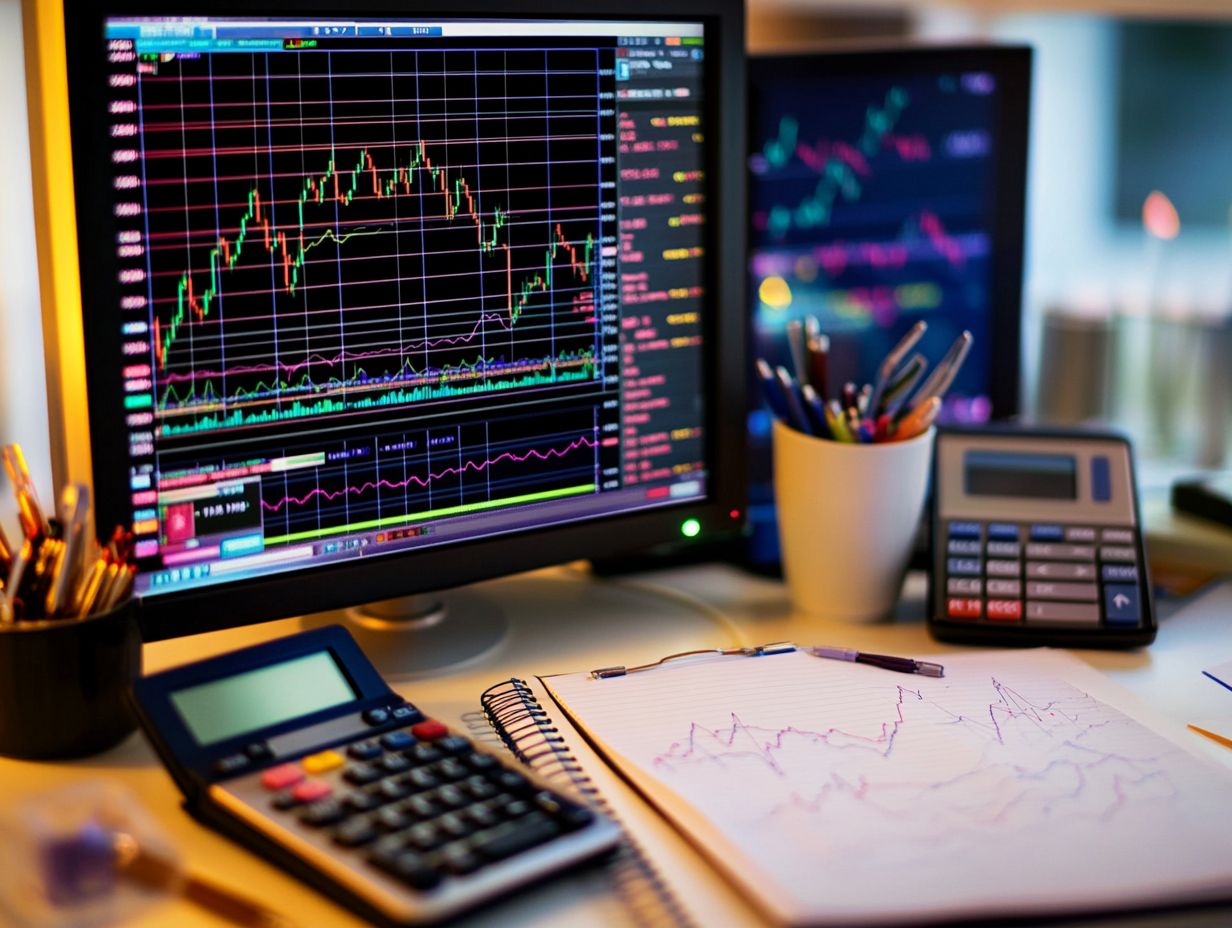
- Familiarize yourself with different types of charts and how to interpret price movements to effectively track precious metals prices.
- Understand various factors influencing precious metals prices, such as supply and demand, economic, and political factors.
- Utilize technical analysis studying price movements and patterns to make informed decisions when trading precious metals and read charts accurately for maximum success.
Understanding Precious Metals Charts
Understanding precious metals charts is essential for navigating the dynamics of the precious metals market. This includes gold, silver, platinum, and palladium.
These charts provide visual representations of price movements over time, capturing market conditions shaped by various factors such as supply and demand, geopolitical events, and economic indicators.
By honing your ability to interpret historical price data, you can craft effective investment strategies. This skill enables you to optimize asset allocation and manage risk effectively in a volatile environment.
Types of Charts Used in Precious Metals Trading
Precious metals trading involves various chart types that play a crucial role in helping you make informed decisions. You ll encounter line charts, bar charts, and candlestick charts, each offering unique insights to elevate your price trend analysis.
Line charts, with their straightforward design, allow you to quickly assess price movements over time and grasp overall trends. Bar charts provide a more detailed view, showcasing the opening, closing, high, and low prices within a specific timeframe. Additionally, understanding how to minimize tax liabilities on precious metals can also be beneficial for investors tracking their assets.
This detailed perspective reveals volatility and highlights potential trading signals. Candlestick charts present price action in a visually compelling way, enabling you to spot patterns that may indicate market reversals or continuations.
Interpreting Price Movements
Interpreting price movements in precious metals is essential for recognizing market trends. This skill helps you craft effective investment strategies that resonate with current investor sentiment.
Several factors significantly shape these price fluctuations, including prevailing economic conditions that influence your confidence and risk appetite. Supply and demand dynamics create pressures that can either support or diminish prices.
Geopolitical events also add a layer of volatility; uncertainty in various global regions often drives investors toward safer assets, boosting demand for precious metals. To navigate this landscape effectively, it’s important to learn how to understand precious metal trends over time. Analyzing charts and understanding historical price patterns helps you make informed decisions based on the interplay of these factors.
Factors Affecting Precious Metals Prices
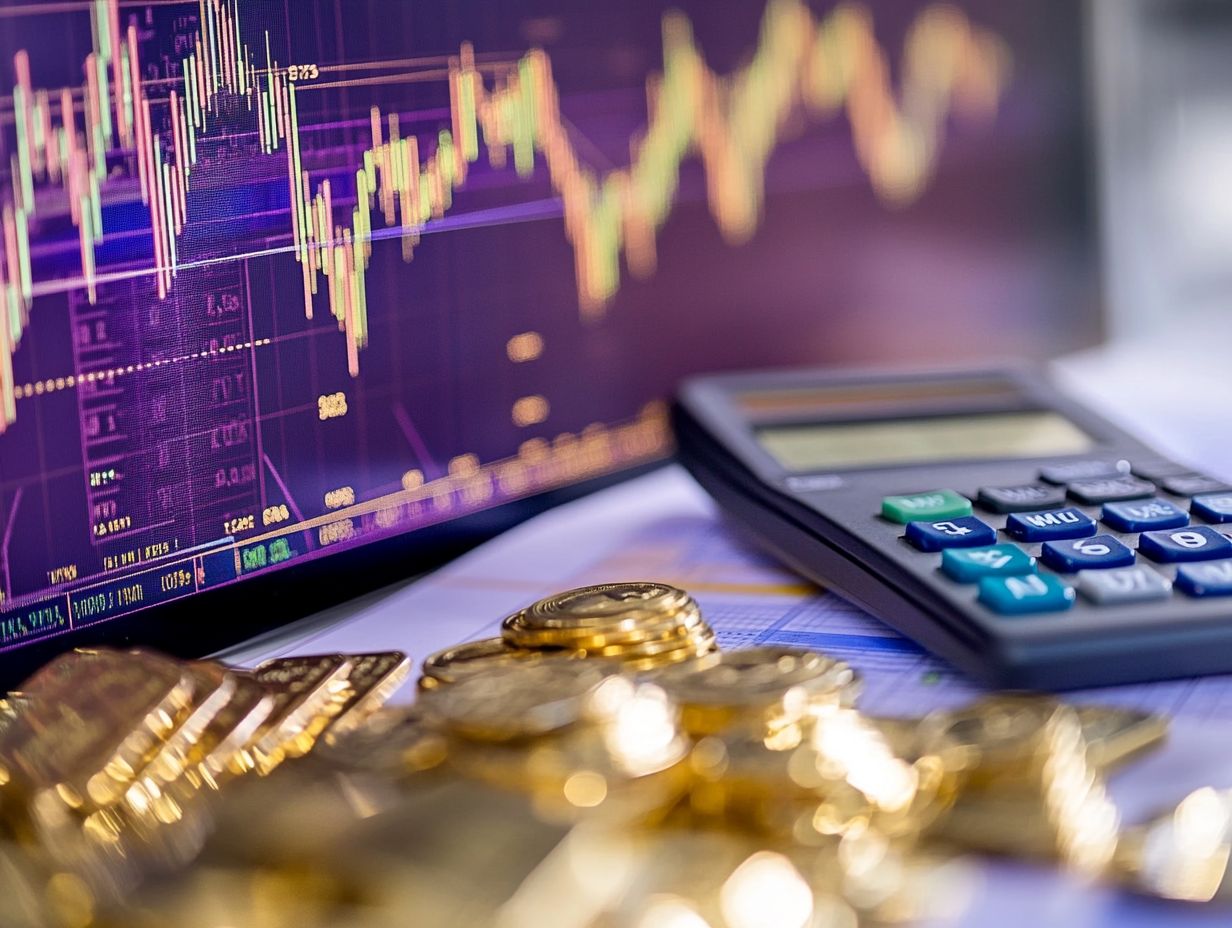
Many factors affect precious metal prices, including supply and demand, economic conditions, and geopolitical events. Getting a grip on these factors can help you make smarter investment choices.
Supply and Demand
The principles of supply and demand are essential in determining the prices of precious metals. Both jewelry consumption and industrial demand significantly shape market dynamics.
When you buy more jewelry, it often leads to an increased demand for precious metals. This prompts prices to rise as producers rush to keep up with the surge.
During economic downturns, investment demand can shift dramatically. You ll see investors flocking to precious metals as a safe haven, further influencing market trends.
For instance, in times of financial uncertainty, the appeal of gold and silver as reliable stores of value can soar, driving prices upward. This dynamic interplay between consumer behaviors and external economic factors continually reshapes the landscape of precious metals. To navigate this market effectively, understanding how to trade precious metals is vital to stay informed about these fluctuations.
Economic and Political Factors
Economic and political factors, including inflation rates and geopolitical events, significantly influence precious metals prices. This often results in heightened market volatility during economic crises.
When inflation begins to rise and central banks hint at potential interest rate hikes, you may notice a surge of investors turning to precious metals as a safeguard against declining currency values.
In times of geopolitical instability, such as military conflicts or severe diplomatic tensions, the demand for safe-haven assets like gold and silver typically increases, driving their prices upward.
Economic indicators like GDP growth rates and employment figures impact your confidence as an investor. If reports indicate a downturn, uncertainty often leads to a spike in buying activity for precious metals, amplifying price fluctuations.
Unlocking Secrets: Analyze Precious Metals Charts
Engaging in a technical analysis of precious metals charts means taking a detailed look at price patterns, moving averages, and a variety of trading indicators. This approach enables you to anticipate future price movements by leveraging historical data, allowing for a more informed investment strategy.
Key Indicators and Patterns
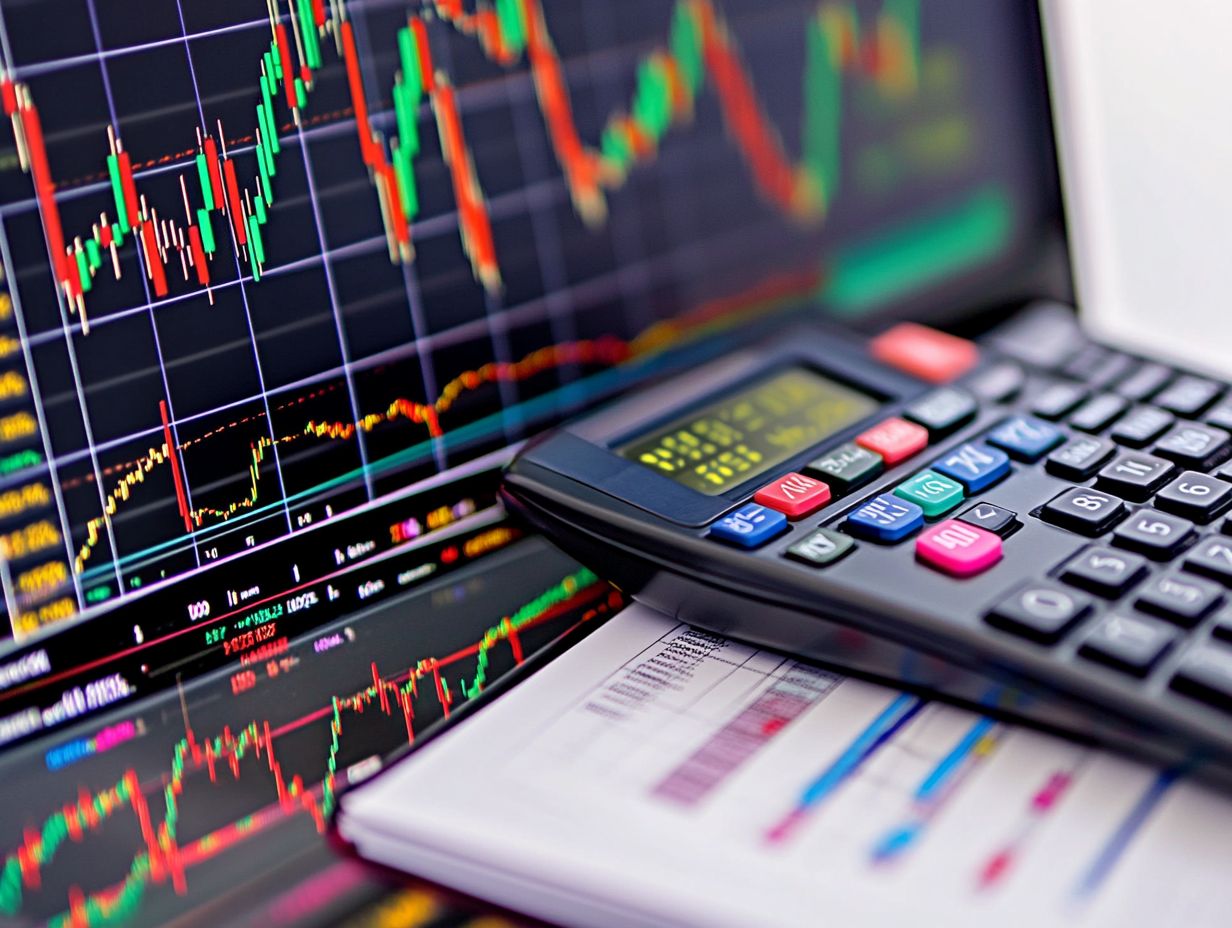
Key indicators and patterns, like moving averages and the relative strength index, are essential for effective technical analysis of precious metals charts.
These tools help you identify potential entry and exit points and provide valuable insights into market trends and price fluctuations. For example, moving averages can smooth out price data, helping you discern whether a commodity is experiencing an uptrend or downtrend over a specific timeframe.
The relative strength index measures how quickly prices are changing, indicating whether a metal is overbought or oversold, providing clues about potential price corrections.
By examining these indicators, you can make more informed decisions and significantly enhance your chances of success in the volatile world of precious metals trading.
Using Charts to Make Informed Decisions
Utilizing charts effectively enables you to make informed decisions regarding your trading strategies. By capitalizing on market insights, you can optimize asset allocation within your investment portfolio, enhancing your overall investment approach.
Strategies for Trading Precious Metals
Effective trading strategies for precious metals require a keen understanding of market conditions and price levels. This allows you to optimize portfolio diversification and minimize risks.
In the fast-evolving investment landscape, remain vigilant when focusing on precious metals. Fluctuating economic indicators can significantly impact asset values. For example, adopting a trend-following strategy enables you to capitalize on prevailing market movements, while a contrarian approach may prove beneficial during heightened volatility. To enhance your investment approach, consider exploring the best practices for precious metals investment.
Utilizing technical analysis tools helps you identify key entry and exit points for your trades. Keep an eye on geopolitical developments, as these often trigger unexpected shifts in demand that can affect both your short-term trading and long-term investment strategies.
Stay updated on these trends to make smarter investment choices!
Tips for Reading Charts Accurately
As an investor, reading charts accurately is vital. It helps you spot price movements and market trends.
Familiarize yourself with chart types like line, bar, and candlestick charts. Each type reveals unique market insights!
Focus on key indicators like moving averages, which highlight trends, and the Relative Strength Index (RSI), which shows if an asset is overbought or oversold.
By integrating these tools into your analysis, you can make confident decisions about when to buy or sell. Stick to a disciplined approach to avoid emotional trading decisions that could hinder your success.
Frequently Asked Questions
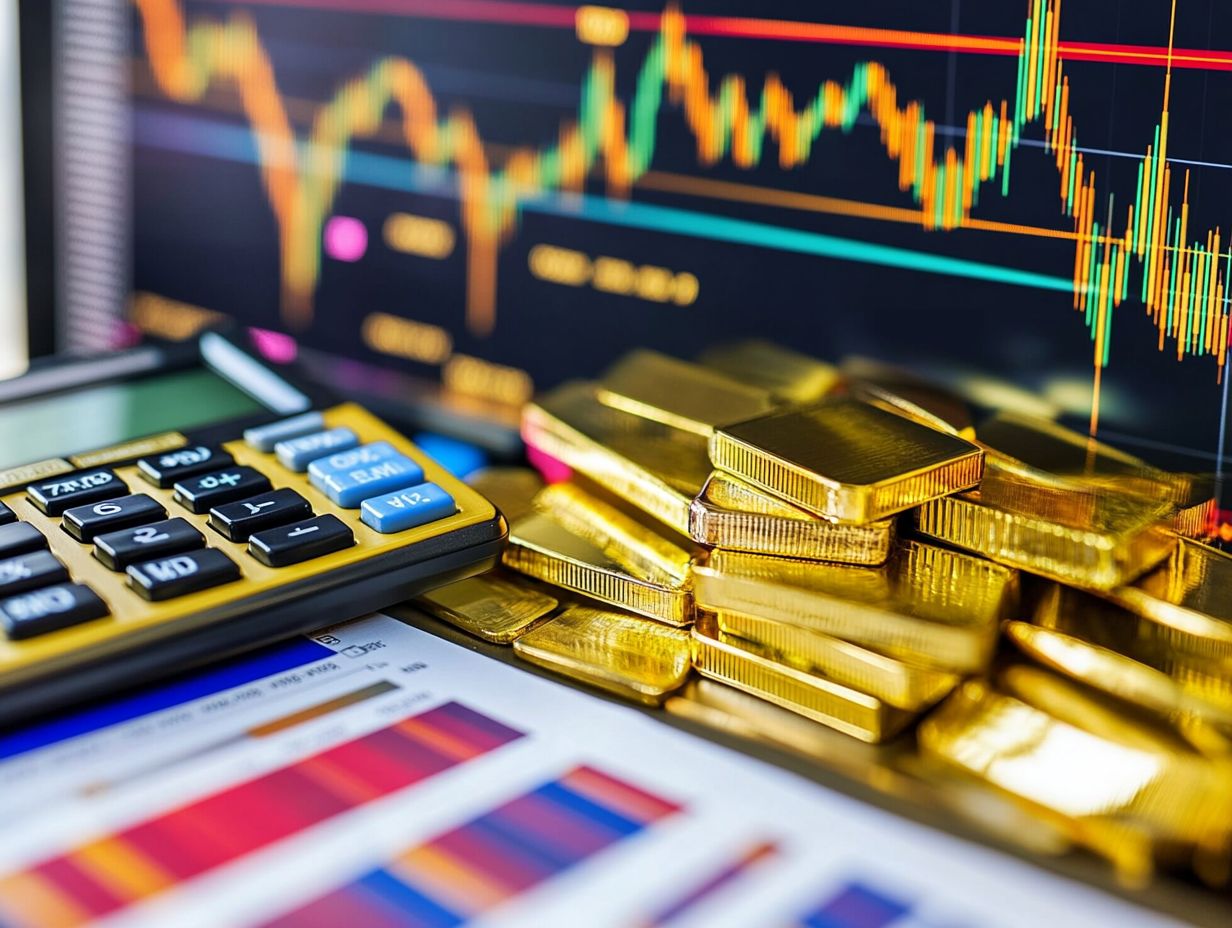
What are precious metals charts and why are they important?
Precious metals charts show the price movements of metals like gold, silver, and platinum. They are essential tools for investors and traders to track performance and make informed decisions.
How do I read a precious metals chart?
To read a chart, know its main parts like the price scale (vertical axis) and time scale (horizontal axis). Understand how to interpret different price movements and use indicators.
What is the price scale on a precious metals chart?
The price scale is the vertical axis that displays the metal’s prices, starting from the lowest at the bottom and increasing as you move up.
What is the time scale on a precious metals chart?
The time scale is the horizontal axis showing the tracked time period, which can range from minutes to years based on the chart type.
What are the different types of charts used for precious metals?
The most common types of charts are line charts, bar charts, and candlestick charts. Each type offers unique advantages and insights into price movements.
How can technical indicators help with reading precious metals charts?
Technical indicators are calculations based on historical price data. They help identify patterns and trends, providing buy and sell signals to guide your trading decisions.
Start analyzing charts today and take control of your investment journey!











